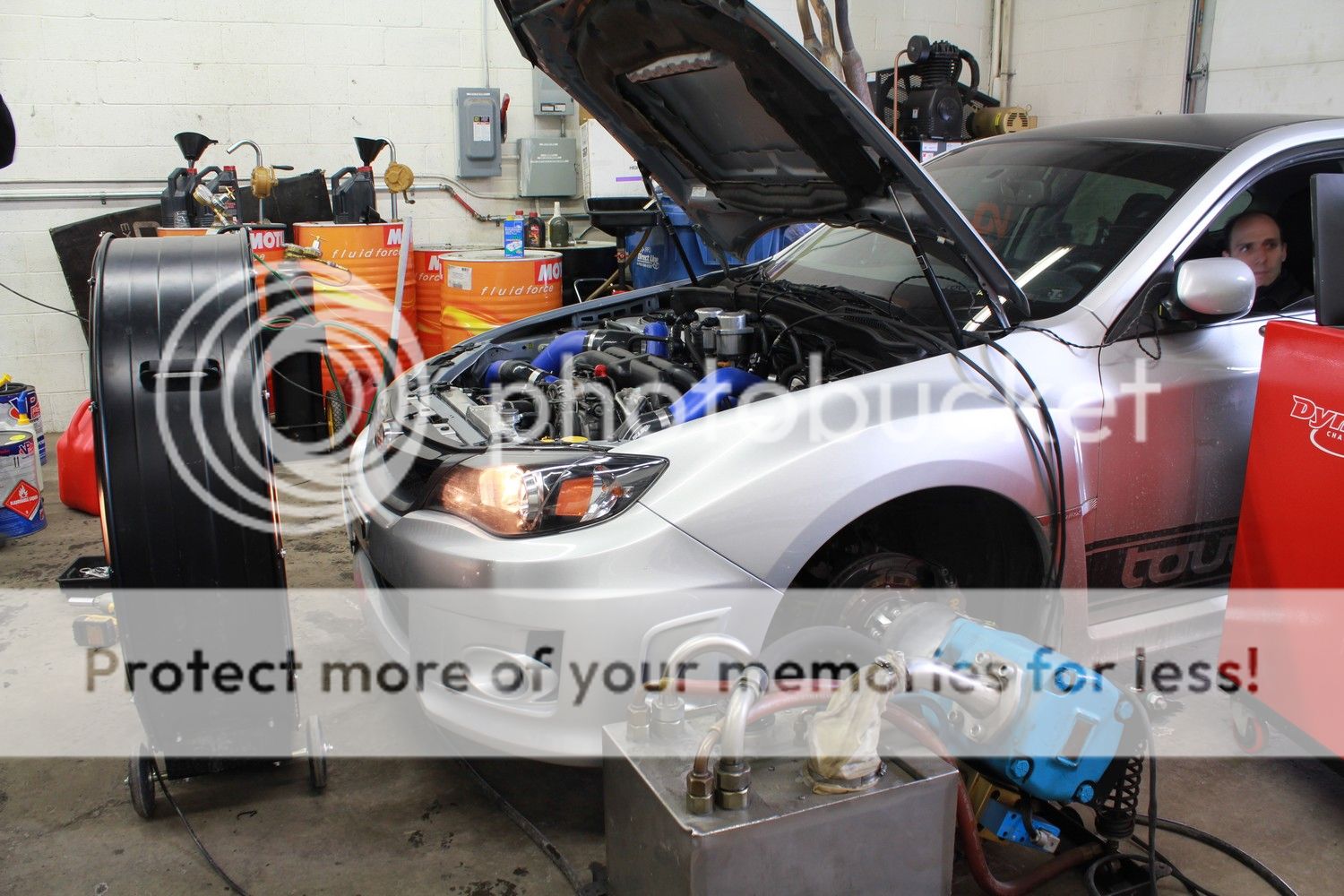Part 3 is here and it marks the end of the winter engine build and big turbo set-up for Project Blackout…..si it’s time the car hits the dyno. However, it does not mark the end of further big upgrades done to the car to prepare for the 2015 season.
Let’s get to the dyno first. Here the car is strapped down, or in this case bolted up, to the Dynapacks of OnPoint Dyno. As always Sasha at OnPoint Dyno (www.onpointdyno.com) came by to do the tuning for Project Blackout as he does for all our cars.

We feel the Dynapack system is the best for dyno tuning and you can see a lot of companies are converting over to hub based dyno systems. They have crucial advantages over other systems since they bolt right up to your hubs you cut out a big variable which is tire contact with rollers. As wheel speeds increase, tires will change in size. Combined with ambient temperatures changing tires will change at different rates. Cars tuned on other systems often move around a bit which results in other unknown variables that can affect not only the numbers but the data that is so crucial to tuning can be invalid. Dynapack systems ensure precision and repeatability and this is very important to not only us but the tuner Sasha. Consistency is crucial in tuning a vehicle as we are dealing with very sensitive factors that involve fractions of numbers which affect engine reliability and power output. At Touge Tuning we exclusively use OnPoint Dyno to tune our cars as we strongly believe not only in Dynapack systems but most significantly Sasha as the tuner you want to have behind your car while on the dyno. He’s one of the best in the business.
With all the upgrades made it wasn’t as simple as getting into pulls right away. The car has been converted to full COBB Speed Density and as such the VE tables have to be tuned which is a lengthy process. This meant waiting for awhile while Sasha dialed those in with steady state use of the dyno to target specific load cells. Once that was pretty well sorted the fun began and Sasha started at wastegate pressure which I believe was around 15PSI. Slowly the boost was turned up run after run and Sasha was really having no issues with the car. It just wanted more and more boost. Once it hit 435WHP we made the decision to stop since we didn’t want to push the car on straight pump 94 Octane and we were all anxious to drain the tank and fill it up with some VP MS109. Before doing so we turned on the meth system and Sasha dialed the tune back so the car would make around 435WHP on pump + meth for safety and cooling. We then drained the tank using our Jiffy-Tite Dry-Break fuel line connection and filled up the car with 20L of VP MS109 which is an unleaded Oxygenated fuel so there’s no need to drain the tank or worry about anything. After doing a pull to make sure things were safe Sasha did a full pull and the car easily was up to 500WHP. After some more fine tuning, which meant more boost and more ignition timing, the car ended up around 525WHP. At this point the Deatshwerks DW65c fuel pump could simply not keep up and we were seeing 10PSI drop in fuel pressure inthe upper RPM range. We had actually expected this to happen based on calculations, but we went ahead in an effort to get empirical data rather then make an assumption based on calculations. A Radium Engineering Surge tank with large Walbro fuel pump is already waiting in the wings to fix this.

All said and done the car made 522WHP 502WTQ @25 PSI on Race Gas and 435WHP and 420WTQ @21 PSI on 94. The turbo was fully spooled before 4000rpm on race gas and we were seeing full spool at about 3900 on 94. Here is the Race Gas map. Green is Torque, Blue is Hoprsepower and Purple is Boost.

And here is the 94 map. Just as a refresher you can look at the notes on the bottom right to see the main components of the build.

With the new Walbro 400LPH fuel pump we believe this set-up is capable of 550WHP on MS109 which is pretty insane for a 2.5L 4 Cylinder! Another side bonus of the surge tank will be that we can run the fuel tank at much lower levels and not run into fuel starvation issues which we’ve seen before. In the end, the car performed as we expected. No failures, no leaks, big power, and very good reliability.
We are writing this in late 2015 and the car is still running flawlessly with no issues and it’s been out to the track many times. The owner drives the car everyday to work, groceries, family events, road trips and of course, CSCS racing and lots of track testing time. At Touge Tuning, we do engine builds with extreme attention to detail so that the customer can can enjoy their car. In the end, we are here to ensure customers get to drive their cars because when it comes down to it, we are all here to drive and enjoy our cars.
Wait, we aren’t done yet, whats a Dyno post without a Dyno video?
